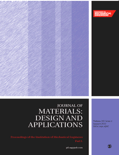
PROCEEDINGS OF THE INSTITUTION OF MECHANICAL ENGINEERS PART L-JOURNAL OF MATERIALS-DESIGN AND APPLICATIONS
Scope & Guideline
Unveiling Cutting-Edge Research in Materials Applications
Introduction
Aims and Scopes
- Materials Characterization and Testing:
This area focuses on the investigation of mechanical, thermal, and chemical properties of various materials, including composites, metals, and polymers. Techniques such as mechanical testing, microstructural analysis, and advanced characterization methods are employed to understand material behavior under different conditions. - Advanced Manufacturing Techniques:
The journal highlights innovative manufacturing processes, including additive manufacturing, friction stir welding, and laser processing. These methodologies are explored for their ability to produce advanced materials and structures with enhanced properties and functionalities. - Sustainable Materials and Applications:
Research in this scope addresses the development and application of sustainable materials, including bio-based composites and recycling methods. The focus is on reducing environmental impact while maintaining or enhancing material performance. - Mechanical Performance and Structural Integrity:
This area covers studies on the mechanical behavior of materials and structures, including fatigue, fracture, and impact analysis. It often includes numerical modeling and experimental validation to ensure reliability in engineering applications. - Multifunctional and Smart Materials:
This scope emphasizes the development and application of materials that exhibit multiple functionalities, such as self-healing, shape memory effects, and energy harvesting capabilities, aiming for innovations in various engineering fields. - Computational Modeling and Simulation:
The journal features research employing computational techniques to model material behavior and predict performance under various loading conditions. This includes finite element analysis and other numerical methods that aid in the design and optimization of materials.
Trending and Emerging
- Nanocomposites and Hybrid Materials:
There is a notable increase in research focusing on nanocomposites and hybrid materials that leverage the unique properties of nanoscale reinforcements to enhance mechanical, thermal, and electrical characteristics. This trend is driven by the demand for lightweight, high-performance materials in various applications. - Integration of AI and Machine Learning in Materials Research:
The application of artificial intelligence and machine learning techniques to predict material properties, optimize processing parameters, and enhance design methodologies is gaining traction. This emerging trend reflects a broader shift towards data-driven approaches in materials science. - Bio-Inspired and Nature-Inspired Materials:
Research exploring materials and structures inspired by natural systems is on the rise. This includes studies on biomimetic designs and sustainable materials derived from natural sources, highlighting a growing interest in eco-friendly engineering solutions. - Functional Coatings and Surface Modifications:
The development of advanced coatings and surface treatments to improve wear resistance, corrosion protection, and other surface properties is increasingly prominent. This trend aligns with the industry’s focus on extending the lifespan and performance of components. - Smart and Responsive Materials:
Research on materials that can respond to external stimuli (such as temperature, light, and moisture) is emerging. This includes self-healing materials, shape memory alloys, and other smart materials that offer innovative solutions for adaptive engineering applications.
Declining or Waning
- Conventional Materials Research:
Research focusing solely on traditional materials, such as basic metals and alloys without innovative processing or application methods, appears to be declining. The trend has shifted towards more advanced materials and composites that offer enhanced properties. - Static Analysis without Dynamic Considerations:
Studies that focus exclusively on static mechanical properties without addressing dynamic loading conditions or real-world applications are becoming less frequent. There is a growing emphasis on understanding material behavior under varying and complex loading scenarios. - Basic Material Processing Techniques:
Research centered on traditional processing techniques, such as basic casting and forging, is diminishing in favor of more novel approaches like additive manufacturing and hybrid techniques that offer greater design flexibility and material efficiency. - Single-Property Focus Studies:
Investigations that concentrate on a single mechanical or physical property of materials, without considering the broader context of performance or application, are less common. The journal increasingly favors comprehensive studies that address multiple properties and their interdependencies.
Similar Journals
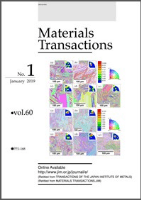
MATERIALS TRANSACTIONS
Fostering Collaboration in Mechanical EngineeringMATERIALS TRANSACTIONS, published by the Japan Institute of Metals & Materials, stands as a pivotal journal in the fields of Condensed Matter Physics, Materials Science, and Mechanical Engineering. Operating since 1993, this peer-reviewed journal aims to disseminate high-quality research that advances our understanding of material properties and behaviors under varied conditions. With an ISSN of 1345-9678 and an E-ISSN of 1347-5320, it provides open access options, ensuring that the latest findings are readily available to a global audience. The journal currently holds a commendable Q3 ranking across multiple categories, underscoring its relevance and impact in the respective fields. Located in Sendai, Japan, MATERIALS TRANSACTIONS has emerged as a vital resource for researchers, professionals, and students alike, fostering innovation and collaboration in material science and engineering methodologies. As the demand for advanced materials continues to rise, this journal serves as an essential platform for sharing and discussing cutting-edge research and developments.

INORGANIC MATERIALS
Fostering Collaboration in Inorganic Materials ExplorationINORGANIC MATERIALS, published by MAIK NAUKA/INTERPERIODICA/SPRINGER, is a pivotal journal in the realm of Materials Science, focusing primarily on the exploration and application of inorganic materials. With a robust commitment to advancing knowledge in areas such as Metals and Alloys, Inorganic Chemistry, and Chemical Engineering, this journal has successfully maintained a reputation for quality, achieving various category quartiles in 2023, including Q3 in Chemical Engineering and Materials Chemistry, and Q4 in Inorganic Chemistry. Although it operates under traditional access models, the journal welcomes contributions from researchers dedicated to understanding the properties and applications of inorganic substances. Throughout its publication history from 1996 to 2024, INORGANIC MATERIALS has become an essential resource for those engaged in innovative research and development, making it an invaluable tool for students, professionals, and academics alike.
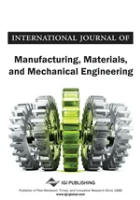
International Journal of Manufacturing Materials and Mechanical Engineering
Pioneering research for the future of manufacturing.International Journal of Manufacturing Materials and Mechanical Engineering, published by IGI GLOBAL, is a pivotal platform dedicated to the advancements in the fields of mechanical engineering and materials science. With an ISSN of 2156-1680 and an E-ISSN of 2156-1672, this journal has been addressing key contemporary issues since its inception in 2011, aiming to foster high-quality scholarly communication through impactful research until 2024. Despite its ranking in the Q4 category for both Mechanical Engineering and Mechanics of Materials in 2023 and its Scopus rankings placing it at the 49th and 44th percentiles respectively, the journal serves as an essential resource for researchers and professionals seeking to stay ahead in their fields. By incorporating rigorous peer-reviewed articles and innovative study findings, the journal not only enhances knowledge but also influences future research and practices in manufacturing and mechanical engineering. Researchers, practitioners, and students alike will find this journal invaluable for keeping abreast of emerging trends and technological advancements.

Materiali in Tehnologije
Pioneering Research in Metals and PlasticsMateriali in Tehnologije is a distinguished peer-reviewed journal dedicated to the field of materials science, focusing specifically on metals and polymers. Published by the Institute for Metals and Materials Technology in Slovenia, this open-access journal has been at the forefront of disseminating research findings and innovative technologies since 2000. With a current impact factor that reflects its increasing visibility in the academic community, Materiali in Tehnologije serves as an invaluable resource for researchers, professionals, and students alike, encompassing a wide array of studies in the categories of Metals and Alloys, as well as Polymers and Plastics. The journal is indexed in Scopus, highlighting its relevance and contribution to the field, particularly with its ranks of Q3 in Metals and Alloys and Q4 in Polymers and Plastics. As it converges towards 2024, Materiali in Tehnologije continues to be a pivotal platform for knowledge exchange, encouraging advancements in materials research and technology.
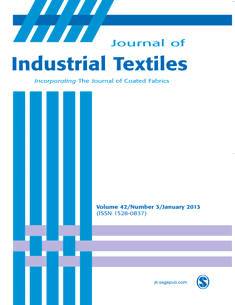
Journal of Industrial Textiles
Innovating the Fabric of IndustryJournal of Industrial Textiles, published by SAGE Publications Inc, is a leading academic journal that focuses on the intricate interplay between textile materials and industrial applications. With a significant impact factor and a strong reputation in the field, it caters to a diverse audience ranging from researchers and professionals to students interested in the advancement of textile engineering, chemical engineering, and materials science. The journal offers invaluable insights into innovative textile processes, sustainable practices, and the latest technological developments as it spans research contributions from 1971 to the present. Notably, it ranks in the second quartile across various categories, including Chemical Engineering and Industrial and Manufacturing Engineering, reflecting its influence and quality in the scientific community. Although it is not an open access journal, the Journal of Industrial Textiles remains a critical resource for advancing knowledge and fostering collaboration within the textile sector and related fields.
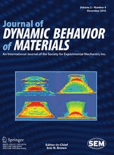
Journal of Dynamic Behavior of Materials
Transforming Knowledge in Materials ScienceThe Journal of Dynamic Behavior of Materials, published by SpringerNature, serves as a premier platform for the dissemination of innovative research in the fields of materials science and mechanics of materials. With its ISSN 2199-7446 and E-ISSN 2199-7454, this international journal has established itself since its inception in 2015, showcasing groundbreaking insights into the dynamic properties and behaviors of various materials. Operating from Switzerland and headquartered in London, this journal embraces an open-access philosophy, albeit not entirely, to enhance research visibility. According to the Scopus rankings, it is positioned in the Q3 quartile for both materials science and mechanics of materials, indicating its growing prominence in the academic landscape. Researchers and professionals alike benefit from its wide-ranging contributions that address contemporary challenges and advancements, making it a critical resource for advancing knowledge and innovation in these crucial fields.
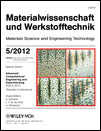
MATERIALWISSENSCHAFT UND WERKSTOFFTECHNIK
Innovating Tomorrow's Materials Today.MATERIALWISSENSCHAFT UND WERKSTOFFTECHNIK, published by WILEY-V C H VERLAG GMBH, is a prominent journal dedicated to the field of materials science and engineering. With its ISSN 0933-5137 and E-ISSN 1521-4052, this journal serves as a vital resource for researchers and professionals engaged in exploring the intricate relationships between the properties of materials and their applications. Established in 1970 and continuing through 2024, the journal has been consistently recognized in various categories, achieving a Q3 ranking in 2023 across Condensed Matter Physics, Materials Science (miscellaneous), Mechanical Engineering, and Mechanics of Materials. Although it does not offer open access, its high-quality peer-reviewed content is fundamental to the advancement of knowledge within its three key areas: novel material development, material characterization, and application of materials in engineering contexts. As a driving force in the scientific community, MATERIALWISSENSCHAFT UND WERKSTOFFTECHNIK continues to cater to the curiosity of aspiring students, seasoned professionals, and researchers alike, facilitating a deeper understanding of the complexities of material technology.
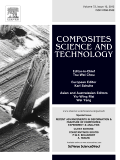
COMPOSITES SCIENCE AND TECHNOLOGY
Unlocking Potential through Cutting-Edge Composite TechnologiesComposites Science and Technology, a premier journal published by Elsevier Sci Ltd, serves as a vital resource in the fields of composite materials and engineering. With an impressive 2023 impact factor reflecting its influential contributions, this journal has established itself within the top tier of academic publishing, flaunting a Q1 ranking in both the Ceramics and Composites and Engineering (Miscellaneous) categories. Covering a diverse range of topics from the development of novel composite materials to their practical applications across various industries, it is recognized for its rigorous peer-review process and high-quality research outputs. As reflected in its Scopus rankings, Composites Science and Technology places in the 97th percentile among general engineering journals and the 94th percentile amongst ceramics and composites science literature. Researchers and professionals alike benefit from its comprehensive access to cutting-edge discoveries and advancements, making it an indispensable tool for driving innovation within this dynamic field.

Frattura ed Integrita Strutturale-Fracture and Structural Integrity
Championing Open Access for Engineering BreakthroughsFrattura ed Integrita Strutturale - Fracture and Structural Integrity is a prominent open-access journal published by GRUPPO ITALIANO FRATTURA since 2007, dedicated to advancing the fields of Civil and Structural Engineering, Mechanical Engineering, and Mechanics of Materials. With an E-ISSN of 1971-8993, this journal has established itself as a significant platform for researchers and practitioners in the engineering community, offering an accessible outlet for high-quality research and innovative methodologies. The journal has achieved impressive standings in the Scopus ranks, notably being positioned in the second quartile (Q2) across its relevant categories in 2023, indicating its growing influence and the quality of the research it disseminates. With a publishing scope extending from 2011 to 2024, Frattura ed Integrita Strutturale continues to be an invaluable resource for addressing the mechanics of material integrity and fracture phenomena, inviting contributions that advance understanding and foster multidisciplinary dialogue. By prioritizing open access, the journal ensures that vital research is readily available to a global audience, enhancing collaboration and knowledge sharing among academia and industry alike.

Composites Part C: Open Access
Disseminating Breakthroughs in Mechanics of MaterialsComposites Part C: Open Access, an esteemed journal published by Elsevier, is at the forefront of research in the fields of Ceramics and Composites, Mechanical Engineering, and Mechanics of Materials. Launched in 2020, this fully open-access journal facilitates unparalleled access to significant advancements in composite materials, ensuring that research findings are disseminated widely and freely throughout the global academic community. With an impressive Q1 ranking across multiple related categories and robust placements in Scopus rankings, specifically #78 in Mechanical Engineering and #24 in Materials Science, the journal serves as a vital platform for researchers, professionals, and students to publish their work and engage with cutting-edge studies. It aims to foster innovation and collaboration in the development and application of composite materials and their technologies, making it an indispensable resource for anyone invested in these dynamic fields.